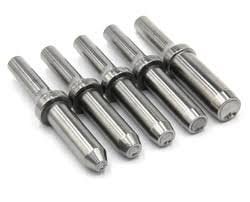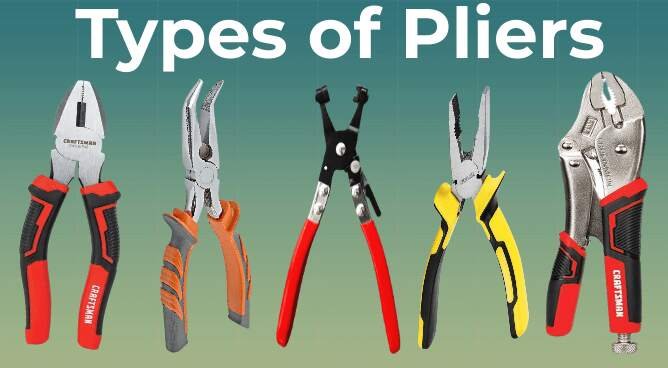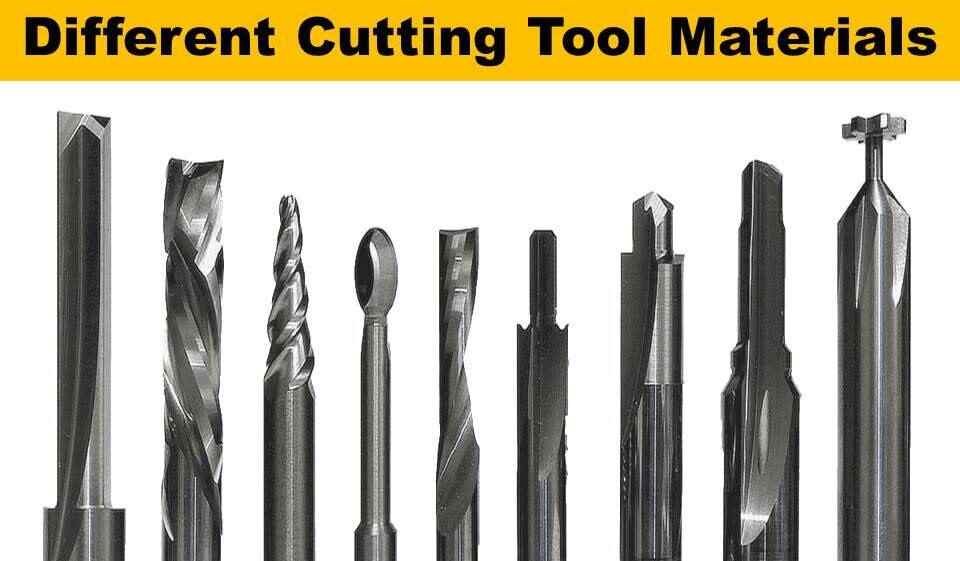Introduction to Sheet Metal Tools : Sheet metal is just metal that has been fashioned into thin, flat sheets. It is one of the most basic metalworking forms, and it may be cut and twisted into a number of shapes. Although extremely thin thicknesses are called foil or leaf, and sections thicker than 6 mm (0.25 in) are considered plate, thicknesses can vary greatly.
The gauge of sheet metal refers to its thickness. Sheet metal gauges range from 30 gauge to roughly 8 gauge. The thinner the metal is, the greater the gauge. Sheet metal can be manufactured from a variety of metals, including aluminium, brass, copper, steel, tin, nickel, and titanium. Silver, gold, and platinum are popular sheet metals for decorative purposes.
Here in this article we are going to have the list of Sheet Metal Tools Names and Images as well.
Types of Sheet Metal Tools
There are fairly large number of hand tools used by sheet metal workers. The tools most commonly used are :-
A. Measuring Tools
1. Steel Rule
This is particularly useful in measuring and laying out small work. It can be measure with an accuracy of 0.5 mm.

2. Folding Rule
This is very useful in measuring and laying out larger work, 0.5 mm.

3. Steel Circumference Rule
This is used to find out directly the circumference of a cylinder.

4. Swing Blade Protractor
This is used for marking and measuring angles.

5. Vernier Caliper
This is used for measuring dimensions up to 0.02 mm .

6. Micrometer Caliper
This is used to measure the thickness of metal sheets to 0.01 mm.

7. Thickness Gauge
This is also called slip gauge and is used to measure the clearance between the parts during assembly.

8. Sheet Metal Gauge
This is used to measure the thickness of sheets.

I hope you are able to understand the Sheet metal tools and their uses according to the situation.
B. Marking tools
9. Straight Edge
This is a flat graduated bar of steel with one longitudinal edge beveled. This bar comes in a variety of lengths ranging from 1 to 3 meter. It is useful for scribing long straight lines.

10. Steel Square
It is a L-shaped piece of hardened steel with marks graduated on the edges for measuring. The narrow arm of the square is called tongue and the wide part is known as the body. It is used for marking in the perpendicular direction to any base line.

11. Scriber
This is sometimes called the metal worker’s pencil. It is a long wire of steel with its one end sharply pointed and hardened to scratch lines on sheet metal in laying out patterns.

12. Dividers
Dividers are used for drawing circles or arcs on sheet metal. They are also used to mark a desired distance between points and to divide lines into equal parts.

13. Trammel Points
The trammel points consists of a bar with two movable heads. It is used to draw large circles or arcs that are beyond the limit of the dividers.

This Sheet metal tools list will give you a complete overview of all the tools and equipment being used and available in the market.
3. Bending and Folding Tools
14. Pliers

Pliers are used for holding, cutting and bending work. Flat node pliers are used for forming and holding work while round nose pliers are used for holding and forming various shape and patterns.
15. Folding Bars

Folding bars are a tool / piece of equipment, for working with sheet metal. They are placed in a vice and used to ‘fold‘ the sheet metal, to a 90 degree angle. ‘Folding‘ is the correct term for bending or forming sheet metal to an angle.
The folding bars are used for bending and folding operation of the sheet metal.
4. Striking Tools
16. Punches

Punches : A punch is used in sheet metal work for marking out work, locating centers, etc. in a more permanent manner. Two types of punches are generally used: (1) prick punch, (2) center punch (Fig. 14.28). The prick punch is used to make small marks on lay out lines in order to make the prick-punch marks longer whilst the center punch is used only to make the prick punch markers larger at the centers of holes that are to be drilled.
Besides, there are solid and hollow punches very similar to other two punches the inner and outer faces of the punch meeting at an angle of 40°. These are used for making small holes from 2.5 mm to 10 mm. A hand lever punch is sometimes used for making holes with a punch and die incorporated in the tool when a large number of holes are to be punched.
17. Hammers

Hammers : Hammers are used for forming shapes by hollowing, raising, stretching or throwing off. There are many types of hammers, but the most commonly used hammers as sheet metal tools are:
(1) riveting hammer used for riveting;
(2) setting hammer specially useful for setting down the edge when making a double seam; and
(3) raising hammer used for forming of a flat sheet of metal into a curved or hollow shape such as a saucer, bowl, tray or spoon.
18. Mallet

These are soft hammers, and made of raw hide, hard rubber, copper, brass, lead or mostly of wood, used to strike a soft and light blow on the metal.
5. Cutting Tools
19. Chisels

Chisel : Chisels are generally used in sheet metal work for cutting sheets, rivets, bolts and chipping operations. A good number of cold chisels are used. The flat chisel and round nose chisel are most widely used in sheet metal works.
20. Snips or Shears

A snip, also called a hand shear (Fig. 18.2) is used like a pair of scissors to cut thin, soft metal. It should be used only to cut 20 gauge or thinner metal. There are several types of snips available for making straight or circular cuts, the most common being straight snips and curved snips.
The straight snip have straight blades for straight line cutting while curved or bent snips have curved blades for making circular cuts. Both these snips are very light and can be easily handled by only one hand.
These are also double cutting shear, squaring shear, ring shear and circular shear used for particular requirements as the name indicates. The heavier classes are known as bench shears and block shears where one handle may be held in vice or bench plate while the other handle is moved up and down to do the cutting.
6. Supporting Tools
With various operations being performed at different platforms and angles , we need some supporting sheet metal tools to make the process more efficient.
21. Stakes
Stakes are the sheet metal worker’s anvils used for bending, seaming or forming, using a hammer or mallet. They actually work as supporting tools as well as forming tools. They also help in bending operation. They are made in different shapes and sizes to suit the requirements of the work. Some useful forms are shown in Fig. 18.3. The double seaming stake is used to make the double seam.
The beak horn stake is used for riveting, forming around and square surfaces, bending straight edges, and making corners. The bevel edge square stake is used to form corners and edges. The hatchet stake is used to make straight, sharp bends and for folding and bending edges. Small tubes and pipes are performed on the needle case stake. Cone-shaped articles may be formed on the blow-horn stake. Hollow mandrel stakes are used for riveting, seaming and forming
22. Anvils

The anvil serves as a base for smithy work while hammering. The body of the anvil is made of mild steel (MS), wrought iron, or cast iron (CI). The anvil weighs between 100 and 150 kg.
23. Swage Block
It is a CI block with a variety of slots of various shapes and sizes running along its four side faces. It also has a number of through holes of varying size and shape running from top to bottom. This block is useful for metal bending, punching, and shaping.
Other Sheet Metal Tools
24. Hand Groovers

This is used for groove and flatten a seam as shown in figure. This is available in many shapes.
25. Rivet Set

This is a hardened steel tool with a hollow in one end as shown in figure. It is used to shape the end of a rivet into a round, smooth head.
26. Soldering Iron

Soldering irons are used for soldering work and consist of a forged piece of copper joined to an iron rod with a wooden handle. These are also called soldering coppers. They are made in various shapes and sizes as shown in the figure.
Buy Soldering Iron
Check Out Other Important Topics
Plant Layout – Types, Objectives, Principles, Advantages
Types of Punches – Uses, Working, Applications, Pictures
Types of Dies – Classification, Uses, Pictures
Types of Rivets – Working & Their Uses [with Images]
Types of Fasteners – Uses & Examples [with Pictures]
Foundry Tools And Equipment – List, Names & Images
| IC Engine | Important PDFs | Boilers | Synergy Maritime Exam | Naval Arch | MEO Class 4 |
| Interview Questions | Difference Between | Types of Pumps | Auxiliary Machines | Types of Valves | Home |









